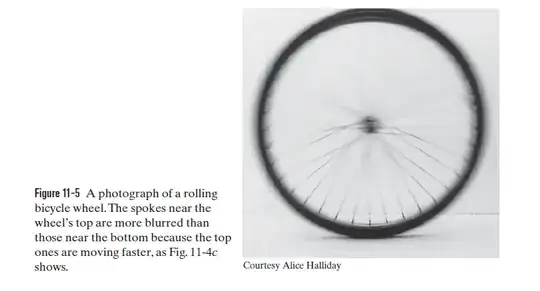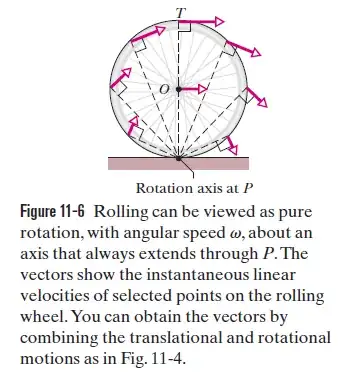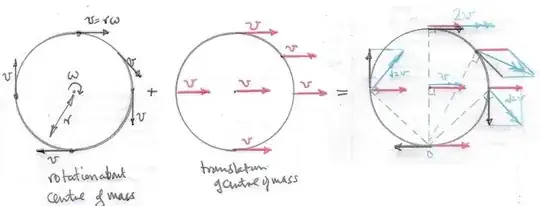You have to remember that the entire wheel is also moving.
Think of this. Where the wheel meets the ground, the velocity of the contact point must be 0, otherwise the wheel would be skidding. Another way of looking at it is that at the contact point the forward velocity of the wheel is cancelled by the backward velocity of the point. On the other hand, at the top of the wheel these velocities add together: the velocity of the entire wheel with respect to the ground, plus the velocity of that point with respect to the centre of the wheel.
I once tested this, when I drove behind a truck that was trailing a rope on the road. I drove one of my front wheels over the rope and instantly the rope broke. It had to break because one end of the rope was moving at the speed of the truck, while the other was stationary between the road and my tyre.


